
AN AUBURN UNIVERSITY STUDENT RESEARCH SPOTLIGHT ON THE CRUSTACEAN AND MOLLUSCAN ECOLOGY LAB.
Kayla Boyd and Kaelyn Fogelman are Ph.D. candidates within Dr. Jim Stoeckel’s Crustacean and Molluscan Ecology Lab (C.A.M.E.L.) in the Auburn School of Fisheries, Aquaculture and Aquatic Sciences.
Fogelman has dual B.S. degrees in Biology and Ecology from Susquehanna University of Pennsylvania where her undergraduate research focused on aquatic ecology. Her love of aquatic sciences began when she started scuba diving during her freshman year of college and swam the Great Barrier Reef while studying abroad in Australia.
In her current position at the C.A.M.E.L., Fogelman works on her dissertation research focused primarily on the feeding ecology of mussels as well as several side projects. As lab manager, Fogelman oversees and assists other graduate students with their projects, manages day-to-day lab operations, and general husbandry of the aquatic animals in the lab.
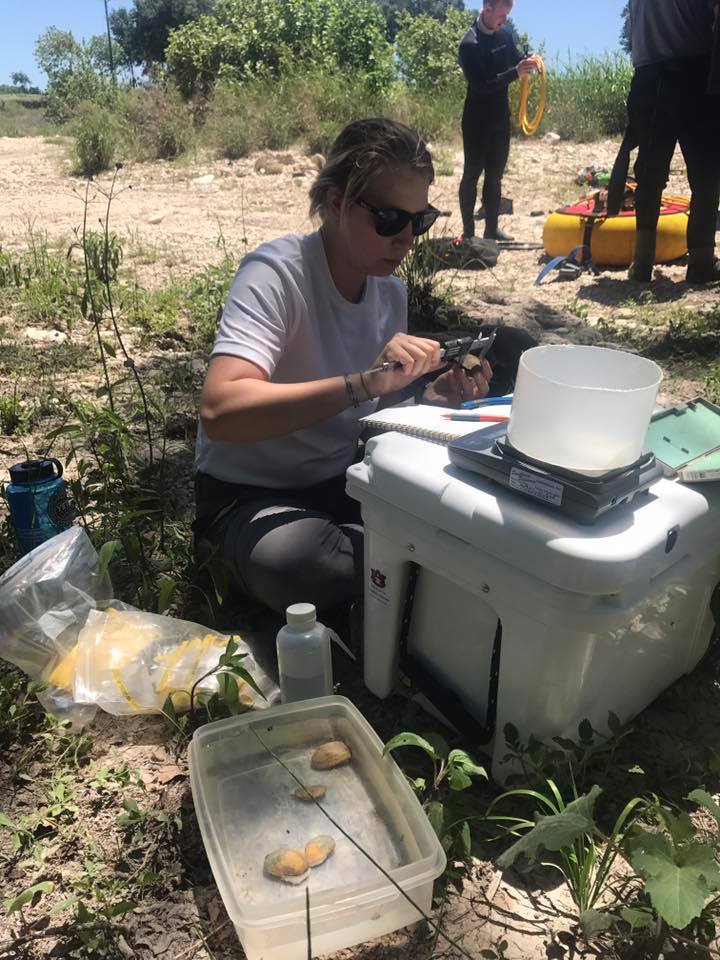
Kaelyn samples mussels in Texas for stable isotopes.
Boyd has a B.S. degree in Biochemistry and Molecular Biology from The University of Wisconsin-Stout in Menomonie, Wisconsin. She had limited experience with aquatic animals prior to joining Dr. Stoeckel’s lab. Boyd now runs the oyster lab within the group. Her research focus areas are biocontamination, bioaccumulation, and bioenergetics relating to aquatic animals, specifically oysters.
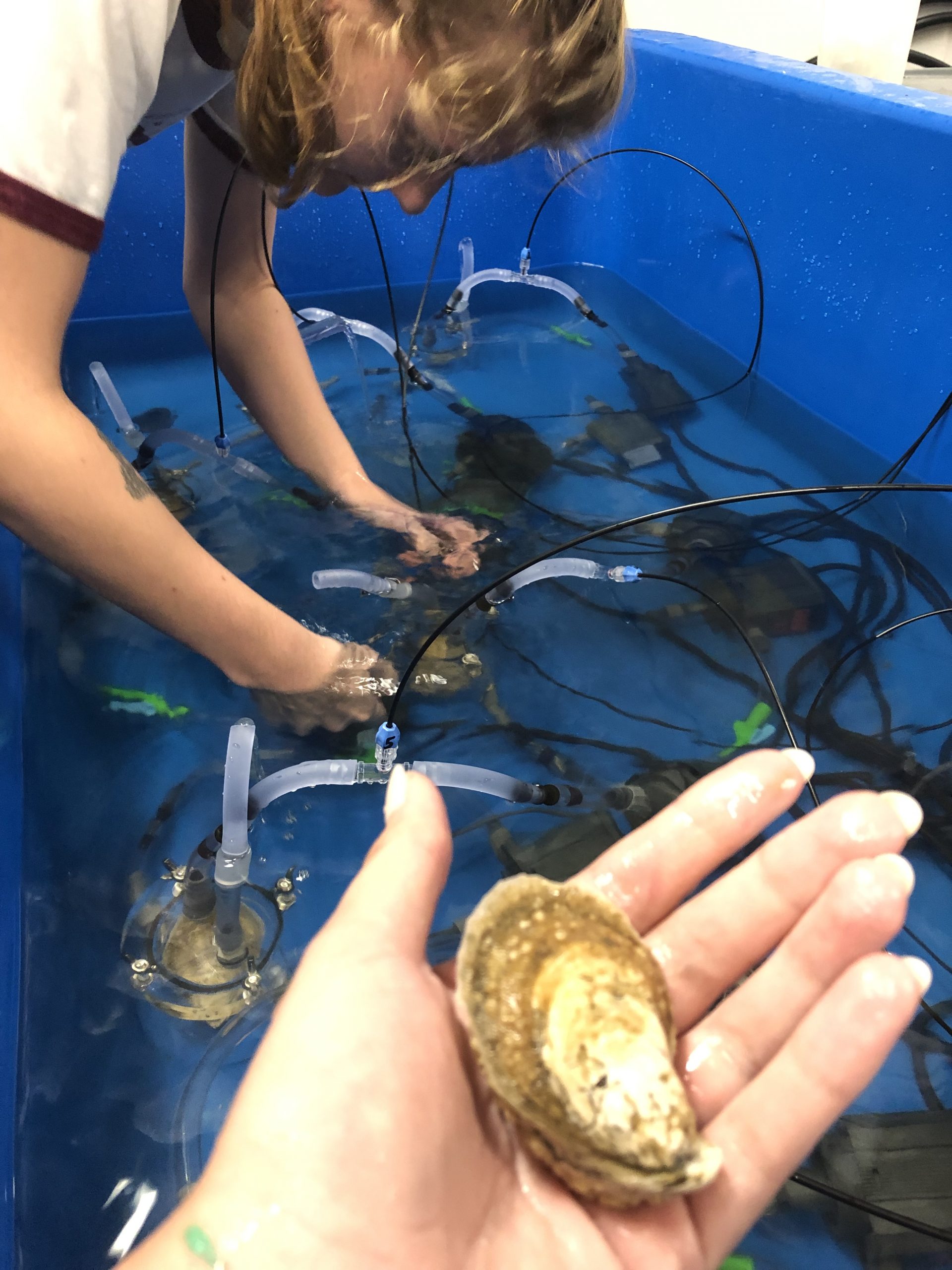
Kayla conducts oyster respirometry assays.
Boyd and Fogelman are known to have many additional research interests beyond their dissertation topics and work on several side projects together in the lab. Their passion for their research is evident when they speak about their work coupled with their vast knowledge of aquatic animals.
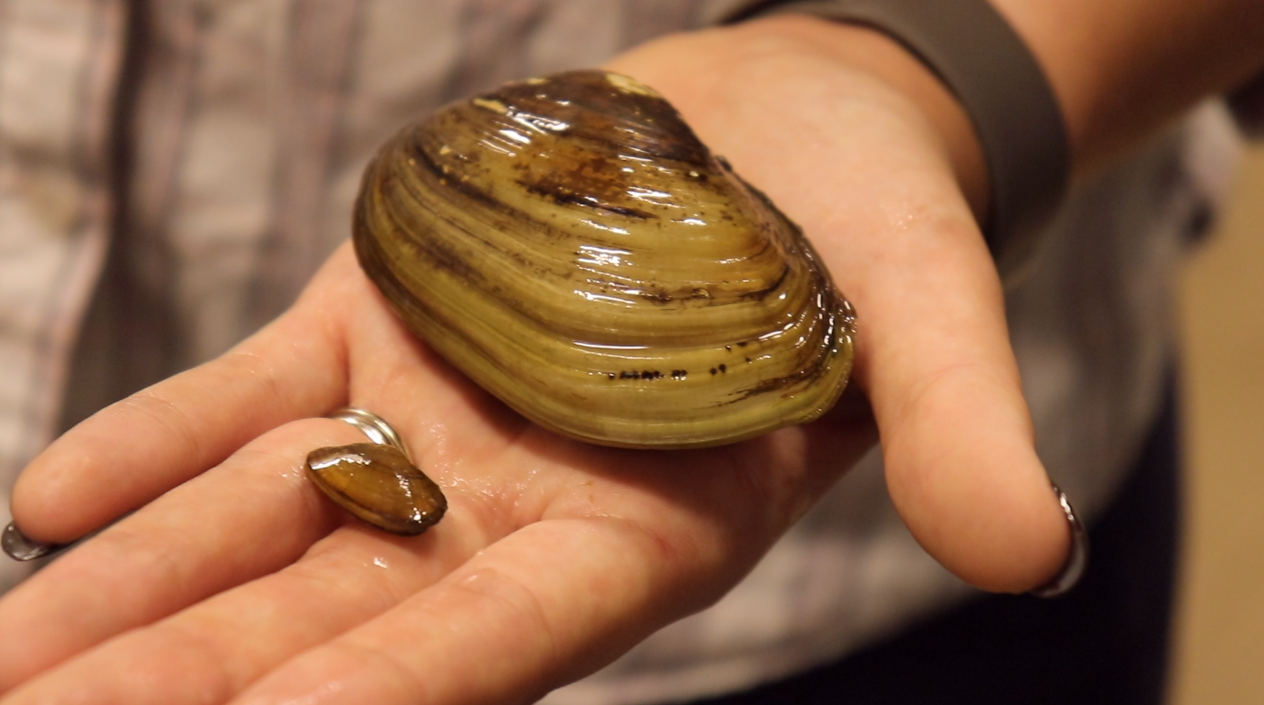
Adult and juvenile Lampsilis straminea (Rough Fatmucket) from US Fish and Wildlife Hatchery in Warmsprings, Georgia.
One project they are jointly pursuing is the aerobic scope of aquatic invertebrates and metabolic depression in invertebrates, including crayfish, mussels, marine oysters, and marine shrimp. “Aerobic scope may be an important driver underlying thermal tolerance and geographic range of aquatic ectotherms. Aerobic scope represents the excess capacity of an organism to deliver oxygen in support of activity, growth, and reproduction,” said Fogelman.
The project involves exposing invertebrates to increasing temperatures and measuring their metabolic rate. Initially, their metabolic rates increase, but then decline as the temperature increases, a change known as “metabolic depression.”
In some animals like crayfish, Boyd says, “metabolic depression is a signal for imminent death. In some sessile animals like freshwater mussels, and perhaps oysters, it seems to be an adaptation to reduce thermal stress.” One hopeful outcome of the experiment is they will be able to develop sublethal indicators for metabolic depression so there is no need to euthanize animals to identify their thermal tolerances.
This project is important not only Alabama, but to the world, as aquatic animals face the consequences of climate change. “Understanding the physiological mechanisms behind thermal tolerance,” Fogelman says, “is of increasing importance in the face of ongoing climate change,” as thermal tolerance can be related to the geographic range of aquatic organisms.
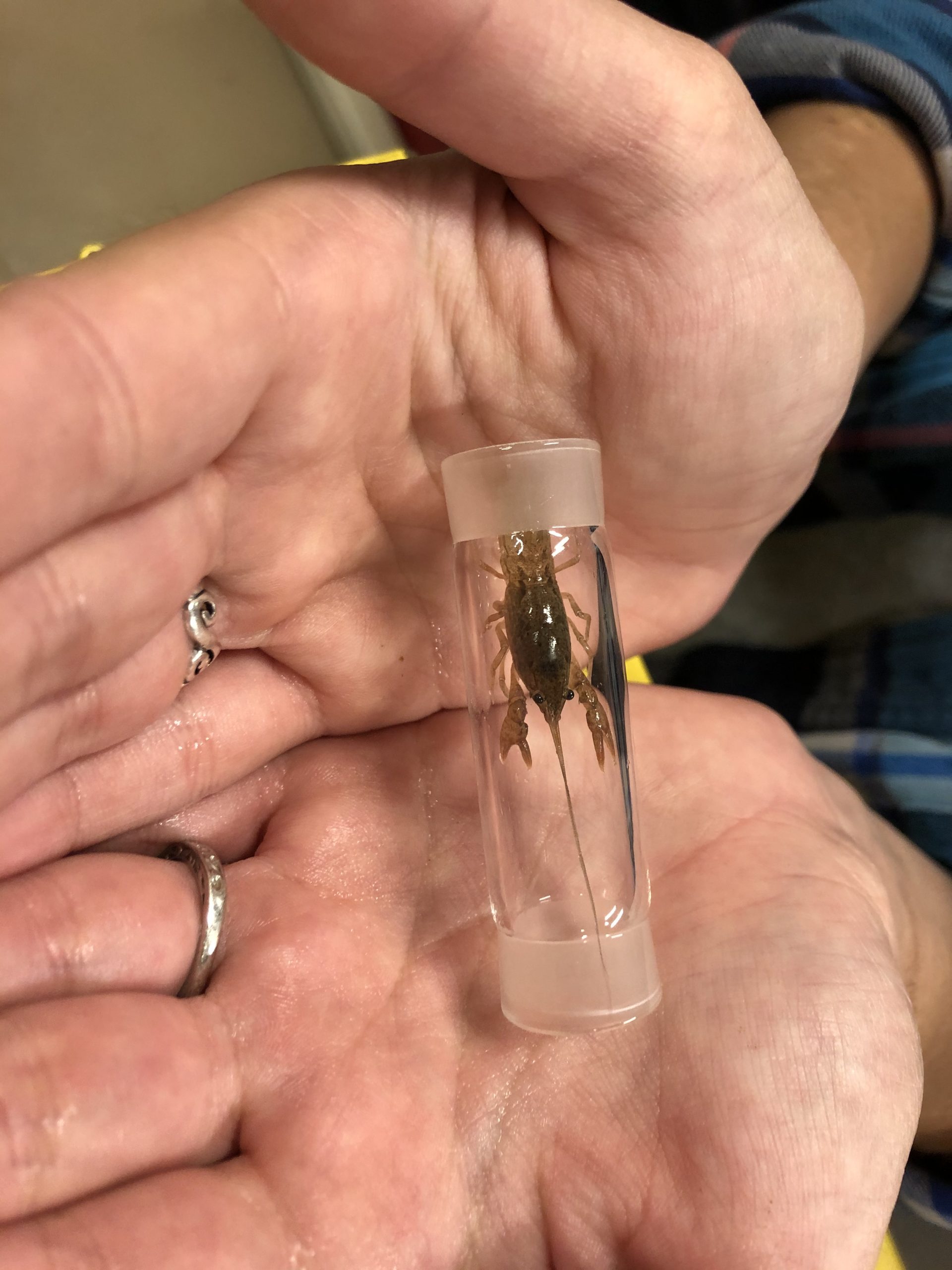
A small crayfish in a mini respirometer designed by a C.A.M.E.L. graduate student.
Not every project they want to pursue can be funded by large grants, so Boyd and Fogelman have developed creative ways to conduct supplemental research that particularly interests them. Many of their projects are conducted with equipment that is handmade by C.A.M.E.L. members or other Auburn University departments. The mini respiratory system (above) was designed by a fellow graduate student and built by a machinist in AU Aerospace Engineering.
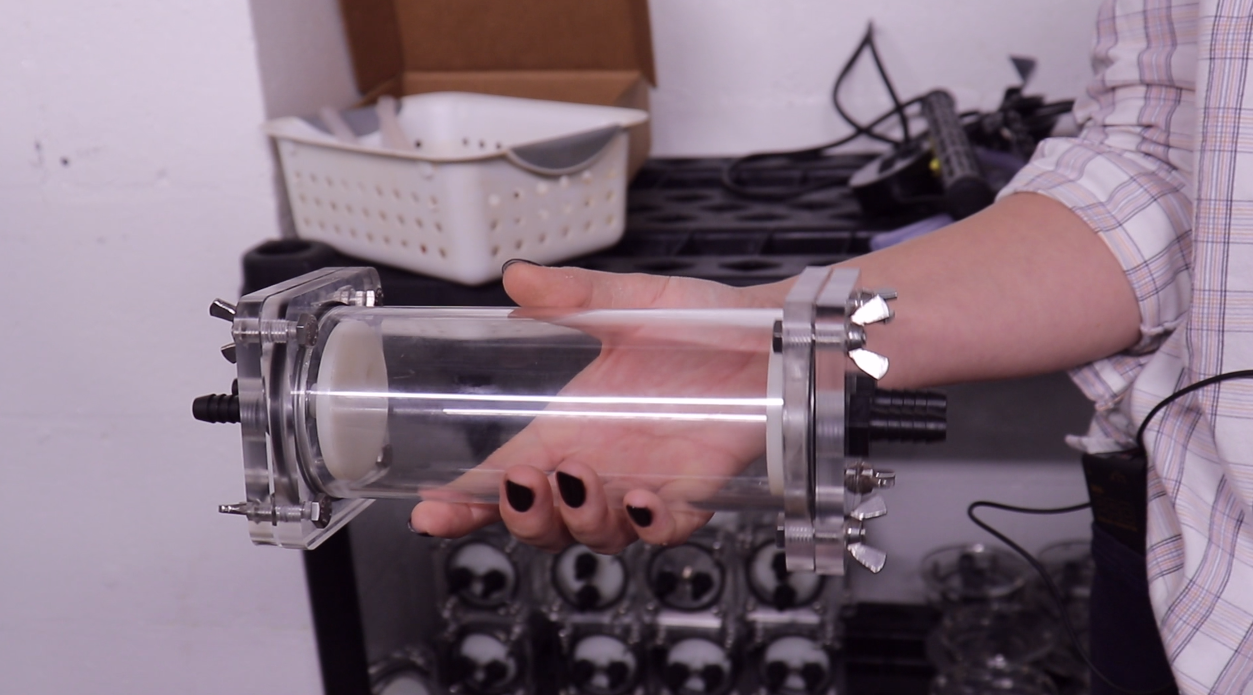
A respirometer intended for commercial shrimp.
“We have been doing thermal assays,” Fogelman says, “where we start the animal, like a mussel, shrimp, or crayfish, at a specific temperature, and we raise the temperature a specific increment every hour. We run the experiment until the animal dies. Some species get up to 38 degrees Celsius, some get up to 43 degrees Celsius.”
The thermal tolerance of aquatic invertebrates can have more than just ecological impacts. According to Boyd, “slower growth means a longer growing season for farmers and the extra energy being put towards depuration could mean the animal is less likely to cope with higher temperatures resulting in more mortalities in the summer.”
It seems there is at least one species that has adapted to warmer temperatures. “We have a species of mussel that we got up to 51 degrees Celsius and it didn’t die, so we don’t know what its thermal limits are,” Fogelman said.
To learn more about the Auburn University Crustacean and Molluscan Ecology Lab, contact Dr. Jim Stoeckel.
